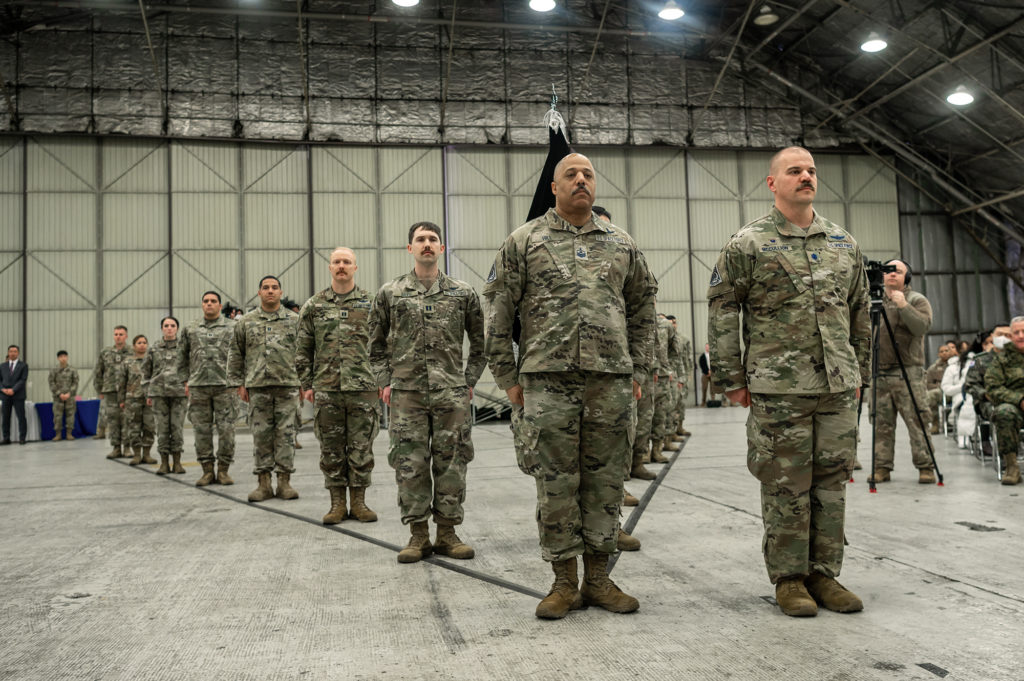Speed, Cost, Performance: SDA Launches First Satellites
By Chris Gordon
T
he Space Development Agency (SDA) successfully launched its Tranche 0 satellites April 2, just two and half years after it first awarded contracts.
The April 2 launch from Vandenberg Space Force Base, Calif., carried 10 satellites—eight for SDA’s data transport layer and two for its missile tracking system—and put SDA’s vision for the future Proliferated Warfighter Space Architecture (PWSA) into orbit for the first time.
“We were established to be the disrupter, to come up with a completely new way to do space architecture,” said SDA Director Derek M. Tournear. “By hook or by crook, we will get new capabilities fielded in space every two years.”
SDA eventually wants to put hundreds of small satellites in orbit as part of proliferated constellations. The Space Force as a whole hopes to make launching satellites an essential but commonplace part of the Department of Defense—just like the service itself. But SDA will have to make compromises the U.S. government has previously been reluctant to make.
“That means that we cannot go with what is the most exquisite capability,” Tournear said. “We’re going to go with what we can deliver in two years based on what is commoditized technology, what industry can deliver, and that’s what we’re going to push forward. We will put schedule above costs, and we’ll put cost above performance to make sure we hit those timelines.”
The first tranche is what the SDA calls the Warfighter Immersion Layer, to give DOD a way to test out the new systems. The majority of the Tranche 0 satellites—20 of 28—are for data transport using the Link 16 waveform, the military’s standard tactical data link. SDA hopes to have all Tranche 0 satellites in orbit by June.
These first satellites will “demonstrate low latency connectivity for laser communication,” as well as the first-ever use of the Link 16 tactical data network directly from space, Tournear said. Bringing Link 16 into space will be transformational in terms of distance.
“Historically, they use their tactical radios to conduct operations and they’ve been limited to a range of a few hundred nautical miles,” Tournear said. “Well, that’s fine if you’re conducting limited operations. But if you’re going to start to prosecute hundreds and hundreds of targets rapidly, you’re going to have to pull in targeteers from all over the globe. Being able to tie into the space transport layer allows you to do that.”
The other element of PWSA is missile tracking. While Tranche 0 will first track test objects, Tournear said SDA wants to eventually tackle complex threats.
“We’re going to field a constellation that does advanced missile tracking,” such as for hypersonic glide vehicles and other hypersonic weapons. “We’ll actually be able to track them so that we can send firing solutions,” Tournear promised.
“Tranche 1, which begins launching in just 18 months, will actually be the first initial warfighting capability,” Tournear said. “At that point—we’re talking in 2025—we’ll be able to have the ability to take the fight to a regional theater and bring these technologies to bear.”
Space Force Looks to Build Ties with More Combatant Commands
By David Roza
The Space Force is integrating its operations into the joint force, building relationships, and standing up components inside U.S. combatant commands. So far USSF has established component commands in U.S. Central Command, U.S. Indo-Pacific Command, U.S. Forces Korea, and soon U.S. European Command, U.S. Cyber Command, and U.S. Special Operations Command.
Lt. Gen. DeAnna M. Burt, deputy chief of space operations for operations, cyber, and nuclear, said it’s all part of the Space Force’s “normalizing” itself as a service.
“Every service presents service components to combatant commanders in order to present forces, to be part of the planning, and to deal with that service’s very specific mission and business and to talk to those threats,” Burt said.
Chief of Space Operations Gen. B. Chance Saltzman said, “Strong relationships with combatant commands are critical to our success: We will use the service component model to strengthen space integration in all the combatant commands.”
Having a presence inside combatant commands, Burt explained, ensures Guardians can “do security assistance and security operation, and talk space with our coalition and allied partners by being at the table in all of those meetings with the combatant commands in each of the theaters.”
The Space Force enjoys a “very tight relationship” with both SOCOM and CYBERCOM, Burt said. Those ties are only natural, given how much space, cyber, and special operations depend on each other, suggested Maj. Gen. David N. Miller, director of operations training and force development at U.S. Space Command.
“It would be a disservice for the Space Force to only talk with the Space Force,” Miller said. “I spend more time with the CYBERCOM and SOCOM J3s [operations] than almost any other J3 … and it’s because of the partnerships that are being developed.”
Burt said a Space Force presence at EUCOM is “on the horizon” and that both CYBERCOM and SOCOM are interested in having similar organizations. “So we’re working through the mission analysis of what those look like.”
Still, the Space Force is small, and must be strategic about its growth.
“I can’t grow to the point that I can’t execute,” she said. “And so I want to make sure that we have the right resources, we’re getting them the right personnel, we have all the right players in the right places to do the mission.”

